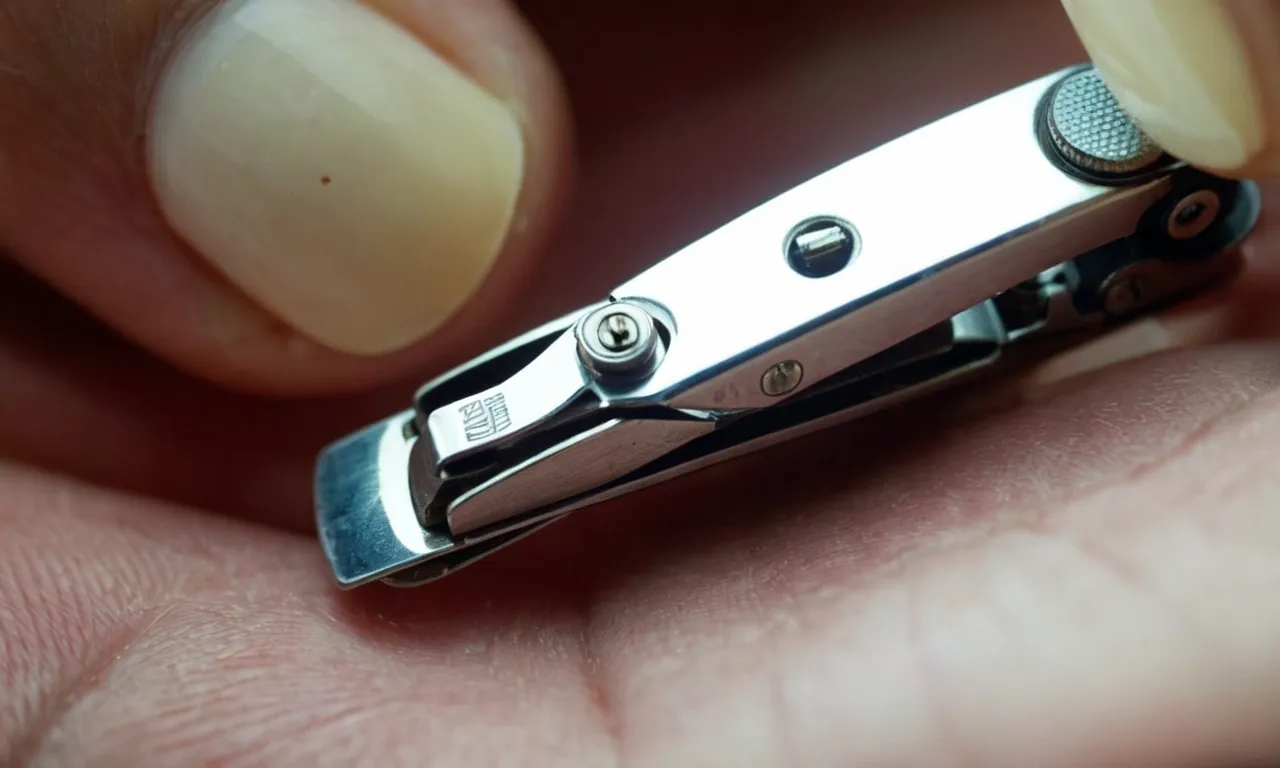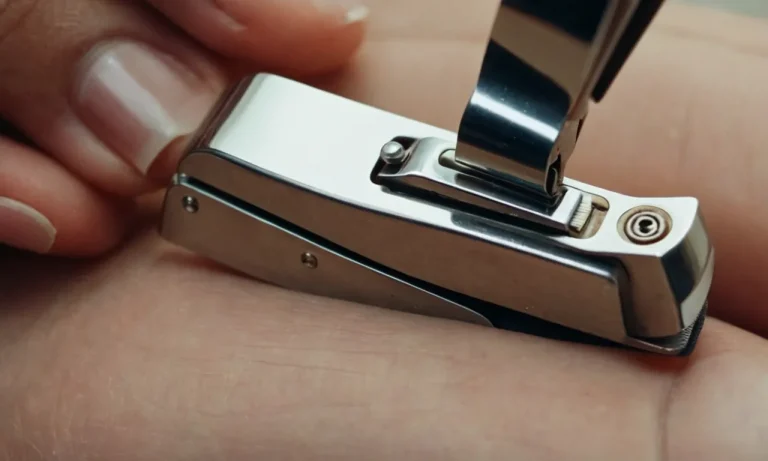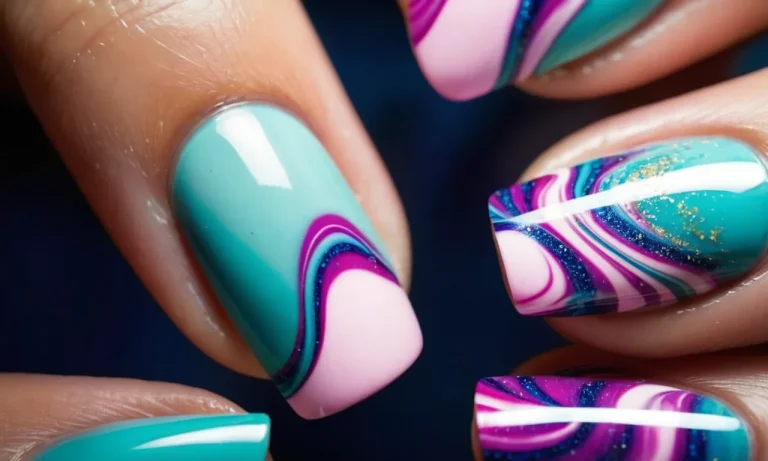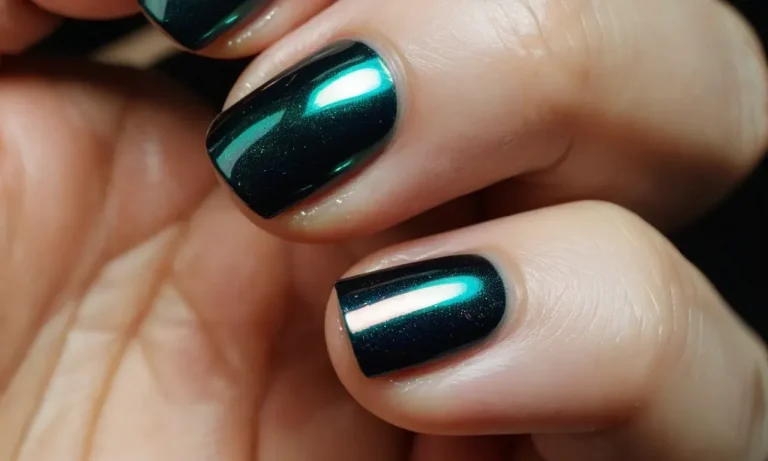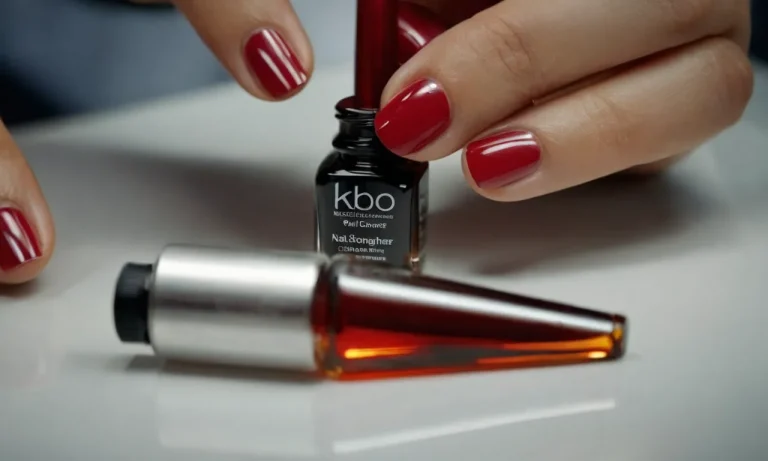How To Safely And Effectively Cut An Ingrown Toenail
If you’ve ever experienced the pain of an ingrown toenail, you know how uncomfortable it can be. An ingrown nail is when the edge of the nail grows into the surrounding skin, causing redness, swelling, and often infection.
If you’re short on time, here’s a quick answer to your question: Soak your foot in warm water, then use sterile scissors or nail clippers to cut out the ingrown section of nail. Be sure to cut straight across, not in a rounded shape.
In this comprehensive guide, we’ll walk through the causes of ingrown nails, tips for prevention, when to see a doctor, and a step-by-step process for safely and effectively cutting out an ingrown nail at home.
What Causes Ingrown Toenails
Ingrown toenails are a common problem that can be caused by several factors. Let’s explore some of the main causes of ingrown toenails so you can better understand how to prevent and treat them.
Poor nail cutting technique
One of the most common causes of ingrown toenails is improperly cutting the nails. Cutting the nails too short encourages the edges to dig into the skin and become ingrown. The nails should be trimmed straight across to avoid this issue.
Cutting the nails in a rounded shape can also lead to ingrown toenails as the edges are left sharp and able to pierce the skin.
Heredity
Some people are simply prone to ingrown toenails due to hereditary factors like nail size, shape, and growth pattern. Those with a family history of ingrown toenails are at an increased risk. The tendency for thick or curved nail growth can make a person more susceptible.
Foot structure
The structure of the feet can also cause ingrown toenails. Those with conditions like bunions or hammertoes are more likely to develop ingrown nails due to the pressure placed on the toes. High arches can also put extra pressure on the outer toes and lead to ingrown toenails.
Nail fungus
A fungal toenail infection can distort the shape of the nail, causing it to become thicker or curve. As the infected nail grows out, it is more likely to become ingrown. Treating the fungal infection is key to preventing recurrent ingrown toenails.
Trauma or injury to the nail or toe
Injury to the nail or toe can result in an ingrown toenail as well. Stubbing the toe, dropping something on it, or jamming the nail can all cause it to become ingrown. The trauma disrupts the normal growth of the nail, encouraging it to grow into the skin.
As you can see, there are several potential factors that play a role in developing ingrown toenails. Understanding the common causes is helpful for prevention. If you are prone to ingrown nails, focus on proper nail trimming technique and promptly treat any fungal infections.
Wearing properly fitted shoes can also help avoid injury and excessive pressure on the toes. With diligent foot care, you can reduce your risk of dealing with painful ingrown toenails.
Preventing Ingrown Nails
Ingrown toenails can be irritating and even painful. Fortunately, there are several effective ways to help avoid getting them in the first place. Taking preventive measures is key to maintaining healthy, comfortable nails and toes.
Trim nails straight across
Trimming your toenails properly is one of the most vital things you can do. According to the Mayo Clinic, you should always cut toenails straight across instead of rounding off the edges. Rounded edges encourage the nail to grow into the skin and becoming ingrown.
Use sharp nail clippers and trim them straight across just above the toe tip.
Avoid rounding nail corners
Similarly, be sure not to round off the corners of the toenails when trimming. Leave them square, with 90 degree angles at the edges. This shape gives the nail room to grow out instead of into the toe.
Wear properly fitted shoes
According to a 2007 study, poorly fitted shoes are a major cause of ingrown toenails. When toes are compressed and forced into a too-narrow space, it puts extra pressure on the sides of the nails. This encourages inward growing.
Wear shoes with a wide enough toe box to allow toes to move freely without rubbing on the sides.
Consider taping toes
Using medical tape to gently wrap ingrown nail areas can help flatten and guide the nail to grow out properly. Apply a small piece across the side the nail grows into the skin. The tape relieves pressure and reduces irritation as the nail grows under and out from it.
Replace the tape every few days as needed.
When to See a Podiatrist for Ingrown Nails
Infection Present
If an infection develops around the ingrown nail, it’s crucial to seek professional medical care. Signs of infection include redness, swelling, oozing pus, foul odor, increased warmth in the toe, and fever or chills.
Left untreated, the infection can spread to the bone and bloodstream, becoming very serious. A podiatrist can treat the infection with oral antibiotics or other methods. Getting prompt treatment prevents complications like loss of the toe.
Persistent Discomfort or Swelling
An ingrown nail causes mild discomfort initially, but the pain typically worsens over time as the surrounding skin becomes more inflamed and swollen. If conservative home treatments don’t relieve the discomfort or reduce swelling within several days, make a podiatry appointment.
The podiatrist has specialized tools to remove the problematic nail edge and medications to control inflammation. This provides faster relief than continuing to self-treat at home.
Diabetes or Poor Circulation
People with diabetes or poor circulation in the feet have a higher risk of developing infections from ingrown nails and other minor foot problems. Because their injuries heal slowly, it’s wise to have a podiatrist evaluate any ingrown nail rather than attempting self-treatment.
Getting early professional care reduces complication risks in vulnerable people. The podiatrist takes extra precautions for high-risk patients.
Recurring Ingrown Nails
Some unlucky people develop ingrown big toenails repeatedly, despite proper at-home care. According to the American College of Foot and Ankle Surgeons, recurring ingrown nails affect an estimated 23% of adults.
For those battling chronic cases, podiatrists can perform minimally invasive surgeries as a permanent solution. Partial or full nail removal reduces instances of additional ingrowth occurring.
Thickened or Deformed Nails
In some cases, thickened, deformed, or oddly shaped nails cause repeated ingrown toenails even with properly trimmed nails. The abnormal nail structure encourages inward curling. Rather than regular palliative care at home, it’s more effective to see a podiatrist.
They can apply special medications or insert small wedges to retrain the nail’s growth. For severely misshapen nails, partial surgical removal creates a better growing environment.
How to Cut an Ingrown Toenail at Home
Gather your supplies
Before attempting to cut an ingrown toenail, make sure you have all the necessary supplies on hand. You’ll need a pair of sharp, sterilized nail clippers, hydrogen peroxide or rubbing alcohol, cotton balls or swabs, a small pair of scissors, an emery board, petroleum jelly, bandages, and antibiotic ointment.
Having these supplies ready will make the process easier and more efficient.
Soak your foot
Start by soaking your foot in warm water for 10-15 minutes. This will help soften the nail and the surrounding skin, making it easier to lift and cut the ingrown section. You can add Epsom salts or antibacterial soap to the water too.
After soaking, use a cotton ball soaked in hydrogen peroxide or rubbing alcohol to clean the area around the nail. This helps prevent infection.
Cut out the ingrown section
Dry your foot thoroughly after soaking. Use the sterilized nail clippers to carefully cut out the ingrown portion of the nail. Cut straight across to remove the spike or edge that is growing into the skin. Don’t cut too deeply into the corners of the nail bed.
If needed, use the small scissors to snip any remnants of ingrown nail. Gently lift the cuticle to make sure the nail is elevated from the skin.
Clean and bandage the area
Use a cotton swab soaked in hydrogen peroxide or alcohol to clean the cut area. Apply a thin layer of antibiotic ointment over the cuticle and surrounding skin. Then place a small bandage over the nail to protect it. The bandage should allow air flow so the area can heal.
Watch for signs of infection
Keep an eye on the area for 1-2 weeks after cutting the nail. Signs of infection include increased pain, swelling, redness, heat, red streaks, drainage or foul odor. If you notice any of these, contact your doctor right away. Taking preventive measures can help avoid complications.
Let the nail grow out
As the nail grows out, file it with an emery board to keep the edges smooth and prevent another ingrown section. Apply petroleum jelly daily to keep the nail and skin soft. Allow proper time for healing before trimming or cutting the nail again. Letting it grow out reduces risk of recurrence.
Conclusion
While ingrown nails can be annoying and painful, in most cases you can take care of the problem at home. With some simple preventive care, you may be able to avoid ingrown nails altogether. Just be sure to see your doctor if signs of infection develop.
We hope this guide gave you the steps and confidence to deal with ingrown toenails. Just remember to always use sterile tools, proper technique, and keep the area clean until fully healed. Happy toe health!

